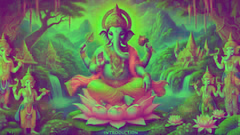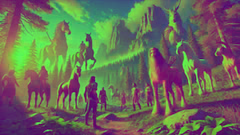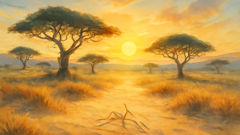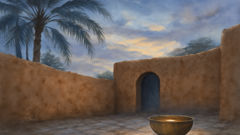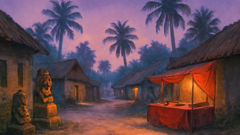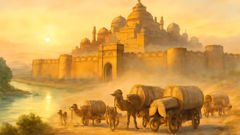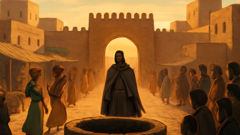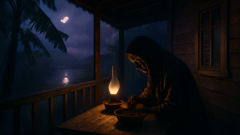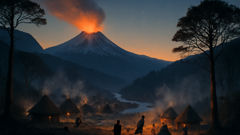Introduction
At the edge of a map no cartographer has yet drawn, where dusk wears the shoreline and the river wears language, Nana Buluku begins. The creator, neither wholly male nor wholly female, steps into the world with a breath that is both hush and gale, and from that breath the first land rises in patient, stubborn patience. Nana Buluku has learned to listen to the soft mathematics of breath and body: the sway of tides, the turning of seasons, the quiet arithmetic of kinship. Their hands are not simply hands but a loom that stitches time to space, and when they touch the void, a continent of possibility ripens under the weight of a single word. That word is not shouted but offered—an invitation to become, to belong, to remember. Mawu and Lisa, the children born of the same dawn but of different tides, step forward from different temperatures of light. Mawu, the moon in her palm, whose gentleness governs tides and tenderness; Lisa, the sun in his chest, whose heat marks courage, work, and order. Together, they listen for the rhythm of life: the heartbeat of the forest, the consent of the earth, the patience of a village waiting for rain. This is a tale not merely told but felt, a map that invites readers to hear the names of rivers as they bend toward the sea, to learn the taste of clay when a potter shapes vessels for bread and stories. In the hush before dawn, Nana Buluku speaks softly to the world they will give birth to: land that can be walked with bare feet, laws that can be learned by children, and a chorus of families who will call the same land home. The myth refuses to be hurried. It asks rather to be walked slowly, with curiosity as correct as the breath a child learns when listening for the first wind. So begins a narrative as ancient as memory and as intimate as a grandmother’s lantern—a story that travels far because it begins at the edge of everything and refuses to end.
Section 1: Nana Buluku’s Loom — The Dawn of Land, Tide, and Law
The first paragraph of this section would set the stage for Nana Buluku weaving the world. The myth would describe how the creator, in a posture both tender and formidable, folds the empty air into coastlines and mountains. The language would be lush, with sensory detail—salt on the breeze, the weight of land meeting water, the tremor of a loom that spans continents. Nana Buluku speaks in a cadence that is neither male nor female entirely, a voice that folds vowels into earth and consonants into rivers. The creation of Mawu and Lisa would be introduced as a dual birth of nocturnal and solar light, a balance that births the cycles of day and night, gravity and growth, the need to gather and to give. Mawu’s crescent smile would calm storms and nurture seeds; Lisa’s bright laugh would spark the fires that cook crops and forge tools. The section would chart the moment when law begins not as decree but as invitation: to share the edges of a creek, to wait for the rains, to feed a guest before a king, to tell the truth even when the truth hurts. The first laws would spring from observing how life responds to care: the way ants stack grain, the way birds seed their fledglings, the way people form a family around a hearth. The prose would braid myth with memory, letting the reader feel the ancient ear listening for consent in the wind. The scene would shift between the monumental and the intimate—from mountain peaks crowned by clouds to the rough palm of a grandmother teaching a child to count tides. This section ends with the three beings stepping back to view a world waking: rivers that will name themselves, soils that will remember their farmers, and a community that will grow wiser by listening to the land and to each other.
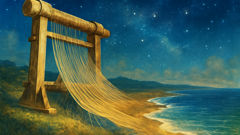
Section 2: The Twins and the First Laws — Mawu and Lisa Shape Habits, Hearts, and Time
In this section, the twins grow from the dawn into agents of order. Mawu and Lisa walk the newborn world as if stepping along a shoreline that never tires of tides. They teach the earliest ancestors to recognize hospitality as a form of worship, to share food with travelers, to honor elders with listening ears and patient speech. They set down seasons not as cold integers but as stories sung through harvests and feasts, where the rains arrive with a chorus of drums and the dry season speaks in memory. The rules they craft are not rigid cages but living agreements: the promise to care for the soil that feeds you, the obligation to tell your lineage to the children who forget their names, the duty to mend what you break and to forgive what you cannot repair. The myth introduces motifs that echo through Beninese life—the sacredness of the earth, the sanctity of ancestry, the reciprocity of gift and gratitude, and the delicate balance of power between beings and the land that sustains them. The prose would dwell on intimate scenes: a healer teaching herbs to a young apprentice, a fisherman bargaining with the tide for safe passage, a grandmother teaching a grandchild to listen to the wind in the trees and the stories in the stars. The tone would both awe and console, reminding readers that even the most celestial laws begin with small acts—sharing a meal, keeping a vow, returning a borrowed tool, honoring a guest. The section would culminate in the moment of recognition that true wisdom is not the cold tally of doctrines but the ability to adjust when the world shifts, to hold both wonder and responsibility in the same breath. The closing image is of Mawu and Lisa stepping back to observe how a people begin to legislate kindness, how a village learns to govern by listening, and how memory codifies the future into a steady, hopeful beat.
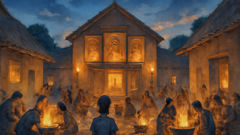
Conclusion
As the story closes, the world rests in the quiet authority of the myths that birthed it. Nana Buluku’s breath returns to the sea, and the twin lights—Mawu and Lisa—continue to pace the cycles of day and night within the heartbeat of every community that has ever listened to the land. The laws they inscribed endure not as distant commandments but as living habits: the way a neighbor is greeted, how a child learns to count not only coins but blessings, how memory is kept in songs, stories, and shared bread. The myth teaches that creation is not a single act but a lifelong practice—of tending, negotiating, forgiving, and rejoicing in the world that every generation inherits and, with care, improves. The tale invites readers to carry this wisdom into their own days: to welcome strangers, to honor elders, to protect the fragile spaces between people, and to remember that the earth itself asks for gratitude and restraint. In the end, the myth remains a living map—guarded by bells, drums, and quiet voices—that guides communities home to themselves and toward a future shaped by kindness, courage, and the patient work of listening.



